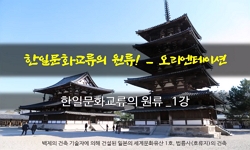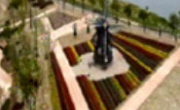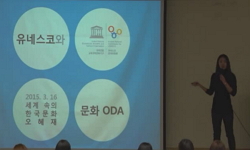북방아시아에서 알타이 지역은 선사 문화가 집중되어 있는 곳으로 보고되어 있다. 그중 알타이 산맥의 주봉을 중심으로 남쪽에 위치한 아랄 톨고이, 차강골, 차강살라. 바가오이고르 지역은...
http://chineseinput.net/에서 pinyin(병음)방식으로 중국어를 변환할 수 있습니다.
변환된 중국어를 복사하여 사용하시면 됩니다.
- 中文 을 입력하시려면 zhongwen을 입력하시고 space를누르시면됩니다.
- 北京 을 입력하시려면 beijing을 입력하시고 space를 누르시면 됩니다.

몽골 알타이지역 암각화의 상호 연관성 연구 = Interconnectivity research of rock paintings in Mongol-Altai region - Focused on rock paintings from Tsagaangol and Tsagaansalaa . Baga Oigor region
한글로보기https://www.riss.kr/link?id=A101248191
- 저자
- 발행기관
- 학술지명
- 권호사항
-
발행연도
2014
-
작성언어
-
-
주제어
차강골 ; 차강살라. 바가오이고르 ; 북방아시아지역 미술 ; 문화 교류 ; 동일한 조형논리 ; 동일한 상징체계 ; 동일한 문화계층 ; 추상형 도상 ; 안경형 탐가 ; 힘 겨루는 형상 ; 궁사 표현 ; Tsagaangol ; Tsagaansalaa. Baga Oigor ; Northern Asian arts ; Cultural exchanges ; Same symbolic system ; Same formative logical system ; Same cultural groups ; Abstract figures ; Spectacle frame Tamga ; Cmpeting their srengths each other ; scenes of archers
-
KDC
900
-
등재정보
KCI등재
-
자료형태
학술저널
-
수록면
7-39(33쪽)
-
KCI 피인용횟수
0
- 제공처
- 소장기관
-
0
상세조회 -
0
다운로드
부가정보
국문 초록 (Abstract)
북방아시아에서 알타이 지역은 선사 문화가 집중되어 있는 곳으로 보고되어 있다. 그중 알타이 산맥의 주봉을 중심으로 남쪽에 위치한 아랄 톨고이, 차강골, 차강살라. 바가오이고르 지역은 대표적인 암각화 유적에 해당한다. 이중 차강골, 차강살라. 바가오이고르 유적은 청동기 문화의 대표적인 부분들을 반영하고 있고 두 지역에서 발견된 암각화에는 유사성과 차별성이 발견된다.
차강골 지역과 차강살라. 바가오이고르 지역은 남에서 북으로 겹겹이 발달한 알타이 산맥의 지역적 특성에 의해 고립된 오지에 해당한다. 그러나 이런 자연조건에도 불구하고 두 지역에서는 공통점이 존재한다. 먼저 환경적 측면에서 강을 끼고 있다는 점, 예술적 측면에서 삶과 환경을 예술로 승화시키고 있다는 점, 표현기법에서 제작기법과 형상화의 단계가 유사하다는 점 등이 그것이다. 이는 두 지역의 공간적 한계에도 불구하고 문화 교류가 활발히 진행되었을 가능성이 높았던 것으로 추정하게 한다. 그러한 가능성은 두 지역에서 발견된 독자성이 있는 도상에 집중하게 하였다.
연구를 진행 하면서 차강골과 차강살라. 바가오이고르 지역 암각화 중에서 조형원리가 동일하게 적용된 유사한 도상이 다수 있음을 확인 할 수 있었다. 그리하여 상호 유사한 도상을 중심으로 조형성에 초점을 두어 분석한 결과는 다음과 같다.
추상형 도상인 안경형 탐가가 두 지역에서 공통적으로 발견된다. 탐가는 문화공동체의 상징이다. 이런 점에서 안경형 탐가는 두지역이 동일계통의 집단공동체임을 알게 한다.
인물 표현에서 두 인물이 힘 겨루는 형상과 궁사 표현 그리고 격투 장면 등에서 매우 특징적인 표현 형식이 확인 된다. 이런 조형 방식은 독자성이 강한 도상으로 두 지역에서만 발견 된다는 것은 동일한 제작 계층의 반증이다.
동물 표현에서 집단으로 양을 표현하는 조형 방식과 산양 뿔을 단순화시켜 디자인화 한 조형 표현은 미적 개념이 두 지역에서 공유했을 가능성이 높은 것으로 판단하게 한다.
인물과 동물 표현에서 소싸움 그림과 곰 사냥 그림은 표현의 유사성이 확인 된다. 생활을 반영한 표현으로서 물새 그림은 삶의 공간에서 아름답다고 느끼는 것을 예술로 승화시킨 결과이다. 물새 소재는 생활의 경험을 날짐승으로 넓혔다는 점에서 예술적 친연성이 높다.
이상의 사실을 종합해 보면 두 지역은 동일한 상징체계와 조형 논리가 지배하고 있음을 알 수 있다. 따라서 두 지역 암각화는 동일한 문화계층에 의해 제작된 것으로 판단된다.
두 문화 사이에 존재하는 제작 선후 관계와 영향, 교류 문제를 규명하는 일은 간단하지 않으며, 원형과 변형 양식이 가지는 특성이 차강골 지역 암각화와 차강살라 ․ 바가오이고르 지역 암각화에서 혼재되어 나타난다. 선사 시대 조형예술의 전개과정과 발전양상을 살피는 연구는 세계 예술사에서 북방아시아 지역 미술이 차지하는 위치를 재조명하는 중요한 의의를 갖는다. 따라서 도상들이 변형 과정을 거쳐 새로운 도상으로 재창조 되는 과정은 면밀히 연구할 필요가 있다.
다국어 초록 (Multilingual Abstract)
The Altai areas in Nothern Aisa has been reported as areas centered with prehistoric cultures. Amongst them Aral Tolgoi, Tsagaangol, Tsagaansalaa, and Baga Oigor from south of main peak of Altai mountain range are representing sites of rock paintings....
The Altai areas in Nothern Aisa has been reported as areas centered with prehistoric cultures. Amongst them Aral Tolgoi, Tsagaangol, Tsagaansalaa, and Baga Oigor from south of main peak of Altai mountain range are representing sites of rock paintings.
The sites of Tsagaangol and Tsagaansalaa. Baga Oigor have distinctive elements of Bronze Age and both similarities and differences are found on rock paintings from two areas. Tsagaangol and Tsagaalsalaa, Baga Oigol has been regionally remoted areas separated by Altai mountain ranges which have developed by layers of mountains from south to north. Although this naturally hard condition, they have somethings in common. In environmental view, they are located along rivers, in artistic view their daily lives and environmental subjects were sublimated into arts and they both have similar technics on expression and formation, and similar process of image formation. These imply that cultural exchanges between two groups must be very active despite of spacial limits. That hypothesis made this study was focused on unique images found from two areas.
During this study I found that they both have similar images which were reflected into same , formational techniques. The result of analysis focused on formative aspects upon those similar images from both areas are as bellow.
Spectacle frame Tamga, as abstract figures, are seen commonly in both areas. Tamga is the symbol of cultural community. Spectacle frame Tamga, implies that both areas were belong to communities sharing same cultural categories.
We can see quite distinctive technique on the way of expression on human figures such as scenes of two figures who are competing their strengths each other, scenes of archers and scenes of fighting. These formative technics are so unique and found only two areas . These are suggesting that they were belong to same group of production.
We can see they figured sheep as whole and simplified and designed the antler's' horns. These methods of formation implies that they share same aesthetic view.
On human and animal figures, we can see their similar techniques especially on bull fighting and bear hunting scenes.
They sublimated something beautiful in their daily lives into art, which are shown in waterfowl. Waterfowl as their subject shows that they were highly affiliated with art through expanding their living experiences into living animals.
These suggest that these two areas were dominated with same symbolic system and formative logical system .Hence we can guess that rock paintings from both areas were produced by same cultural groups.
It is not simple to investigate fully on orderly relations of productions between two groups, their influences, and details of cultural exchanges . and we still can see distinctive characteristics from both original and modified styles on their rock paintings of Tsagaangol, Tsagaansalaa and Baga Oigor. The study about the process and characteristics of development of prehistoric formative arts is significantly important that it sheds new light on importance of northern Asian arts on world art history.
Hence the further and deeper research about process of recreation of new images from original images through modification has to be followed.
목차 (Table of Contents)
- 국문초록
- Ⅰ. 서론
- Ⅱ.차강골 지역 암각화의 조형적 특징
- Ⅲ. 차강살라·바가오이고르 지역 암각화의 조형적 특징
- Ⅳ. 차강골 지역과 차강살라·바가오이고르 지역 암각화의특징비교
- 국문초록
- Ⅰ. 서론
- Ⅱ.차강골 지역 암각화의 조형적 특징
- Ⅲ. 차강살라·바가오이고르 지역 암각화의 조형적 특징
- Ⅳ. 차강골 지역과 차강살라·바가오이고르 지역 암각화의특징비교
- Ⅴ. 도상의 상관관계
- Ⅵ.결론
- 參考文獻
- Abstract
참고문헌 (Reference)
1 임세권, "한국의 암각화" 대원사 1999
2 김호석, "한국의 바위그림" 문학동네 2008
3 서울시립대학교박물관, "한국과 알타이 지역의 바위그림"
4 김호석, "한국 암각화의 도상과 조형성 연구" 동국대학교 2006
5 김호석, "한국 암각화와 북방아시아 지역 암각화의 조형적인 특징 비교 연구" 중앙아시아학회 12 : 183-210, 2007
6 황용훈, "동북아시아의 암각화" 민음사 1987
7 Ш.ДОВДОН, "КРИМИНАЛИСТИ" Улаанбаатар хот 2010
8 ДЦЗВЗЗНДОРЖ, "АРАЛ ТОЛГОЙН ХАДНЫЫ ЗУРБГ" УДААНБААТАР 2005
9 Jacobson. Kubarev, "Tseevendorj. Repertoire des petroglyphes d'Asie Centrale:Tsagaansalaa/Baga Oigor" De Boccard 2001
10 Jacobson. Kubarev, "Tseevendorj. Repertoire des petroglyphes d'Asie Centrale:Tsagaangol" De Boccard 2006
1 임세권, "한국의 암각화" 대원사 1999
2 김호석, "한국의 바위그림" 문학동네 2008
3 서울시립대학교박물관, "한국과 알타이 지역의 바위그림"
4 김호석, "한국 암각화의 도상과 조형성 연구" 동국대학교 2006
5 김호석, "한국 암각화와 북방아시아 지역 암각화의 조형적인 특징 비교 연구" 중앙아시아학회 12 : 183-210, 2007
6 황용훈, "동북아시아의 암각화" 민음사 1987
7 Ш.ДОВДОН, "КРИМИНАЛИСТИ" Улаанбаатар хот 2010
8 ДЦЗВЗЗНДОРЖ, "АРАЛ ТОЛГОЙН ХАДНЫЫ ЗУРБГ" УДААНБААТАР 2005
9 Jacobson. Kubarev, "Tseevendorj. Repertoire des petroglyphes d'Asie Centrale:Tsagaansalaa/Baga Oigor" De Boccard 2001
10 Jacobson. Kubarev, "Tseevendorj. Repertoire des petroglyphes d'Asie Centrale:Tsagaangol" De Boccard 2006
동일학술지(권/호) 다른 논문
-
- 백산학회
- 정인성(Jung In Seung)(鄭仁盛)
- 2014
- KCI등재
-
- 백산학회
- 조진선(Jo Jin Seon)(趙鎭先)
- 2014
- KCI등재
-
- 백산학회
- 고광의(Ko KwangEui)(高光儀)
- 2014
- KCI등재
-
6세기 인도의 천하관(天竺=中國)과 高(句)麗의 위상에 관한 연구
- 백산학회
- 서길수(So Gil Su)
- 2014
- KCI등재
분석정보
인용정보 인용지수 설명보기
학술지 이력
| 연월일 | 이력구분 | 이력상세 | 등재구분 |
|---|---|---|---|
| 2027 | 평가예정 | 재인증평가 신청대상 (재인증) | |
| 2021-01-01 | 평가 | 등재학술지 유지 (재인증) |  |
| 2018-01-01 | 평가 | 등재학술지 유지 (등재유지) |  |
| 2015-01-01 | 평가 | 등재학술지 유지 (등재유지) |  |
| 2011-01-01 | 평가 | 등재 1차 FAIL (등재유지) |  |
| 2008-01-01 | 평가 | 등재학술지 선정 (등재후보2차) |  |
| 2007-01-01 | 평가 | 등재후보 1차 PASS (등재후보1차) |  |
| 2006-01-01 | 평가 | 등재후보학술지 유지 (등재후보2차) |  |
| 2005-01-01 | 평가 | 등재후보 1차 PASS (등재후보1차) |  |
| 2004-01-01 | 평가 | 등재후보 1차 FAIL (등재후보1차) |  |
| 2003-01-01 | 평가 | 등재후보학술지 선정 (신규평가) |  |
학술지 인용정보
| 기준연도 | WOS-KCI 통합IF(2년) | KCIF(2년) | KCIF(3년) |
|---|---|---|---|
| 2016 | 0.6 | 0.6 | 0.71 |
| KCIF(4년) | KCIF(5년) | 중심성지수(3년) | 즉시성지수 |
| 0.63 | 0.59 | 1.723 | 0 |





 스콜라
스콜라







